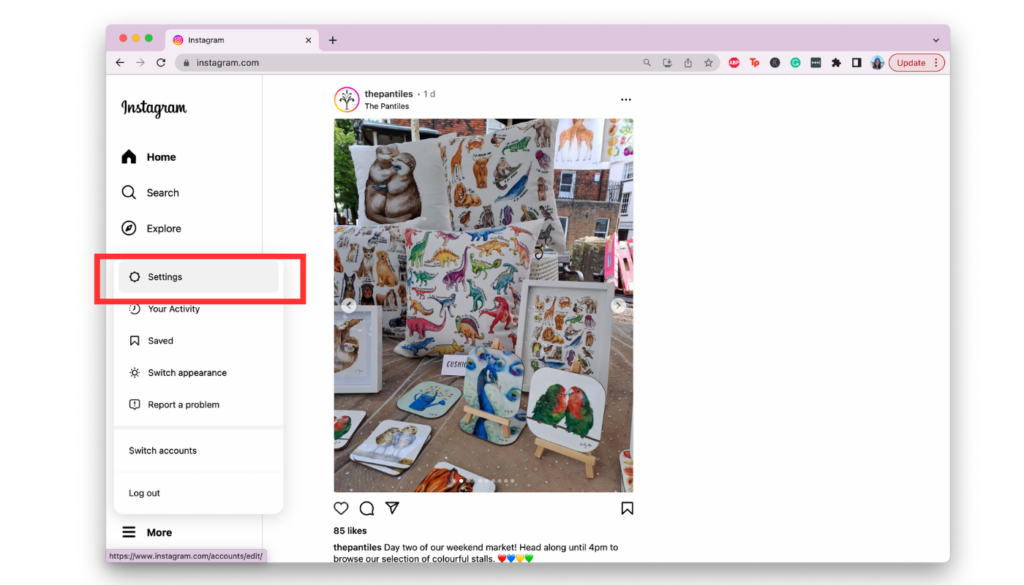Navigating the Challenge of Inappropriate Content in Instagram: A Comprehensive Analysis

In the vast digital landscape of social media, Instagram stands as a beacon of creativity, expression, and connection. With millions of users worldwide sharing their lives, passions, and experiences through images, videos, and stories, Instagram has become an integral part of our daily lives. However, amidst the vibrant tapestry of content on the platform, users often encounter a pervasive and concerning phenomenon: inappropriate content. This content, ranging from explicit imagery to hate speech, poses significant challenges to users’ safety, well-being, and overall experience on Instagram. In this comprehensive article, we will delve into the complexities of inappropriate content in Instagram, examine its impact on users and the platform, and explore effective strategies to mitigate this pressing issue and foster a safer and more inclusive online environment.
Understanding Inappropriate Content in Instagram:
Inappropriate content in Instagram encompasses a wide range of content that may be deemed offensive, harmful, or inappropriate for various reasons, including:
- Explicit or Graphic Imagery: Some users may share explicit or graphic imagery on Instagram, including nudity, sexually suggestive content, or depictions of violence or self-harm. This content may violate Instagram’s community guidelines or standards of decency and may be considered inappropriate for certain audiences, particularly minors.
- Hate Speech and Discrimination: Users may engage in hate speech, discrimination, or bigotry on Instagram, targeting individuals or groups based on characteristics such as race, ethnicity, religion, gender identity, sexual orientation, or disability. Hate speech and discriminatory content contribute to a toxic and hostile environment on the platform and have serious consequences for affected individuals and communities.
- Bullying and Harassment: Some users may engage in bullying, harassment, or cyberbullying on Instagram, targeting individuals with malicious intent, insults, threats, or derogatory comments. Bullying and harassment can have profound and detrimental effects on victims’ mental health, self-esteem, and sense of safety.
- Misinformation and Disinformation: Users may share misinformation, disinformation, or fake news on Instagram, spreading false or misleading information about current events, health, science, or other topics. Misinformation undermines trust in reliable sources of information and can contribute to confusion, polarization, and societal harm.
Impact of Inappropriate Content:
The impact of inappropriate content on Instagram can be far-reaching and multifaceted, affecting users’ mental, emotional, and social well-being in various ways, including:
- Harm to Vulnerable Individuals: Inappropriate content on Instagram can harm vulnerable individuals, including children, teenagers, and individuals with mental health issues or marginalized identities. Exposure to explicit, hateful, or harmful content can trigger trauma, exacerbate mental health conditions, or lead to feelings of alienation and distress.
- Erosion of Trust and Safety: Inappropriate content undermines trust and safety on Instagram, making users feel unsafe, unwelcome, or uncomfortable in the online environment. Users may lose faith in Instagram’s ability to moderate and enforce community guidelines effectively, leading to disengagement or withdrawal from the platform.
- Normalization of Harmful Behavior: The presence of inappropriate content on Instagram normalizes harmful behavior, attitudes, and beliefs, perpetuating a culture of intolerance, discrimination, and toxicity. Exposure to hate speech, bullying, or explicit imagery can desensitize users to the impact of such behavior and contribute to the normalization of online abuse.
- Negative User Experience: The proliferation of inappropriate content detracts from the overall user experience on Instagram, diminishing the platform’s utility as a safe and enjoyable space for connecting, sharing, and exploring. Users may feel discouraged, disillusioned, or distressed by the prevalence of harmful or offensive content in their feeds and interactions.
Strategies to Mitigate Inappropriate Content:
Combatting inappropriate content in Instagram requires a multi-pronged approach involving individuals, communities, platform administrators, and technology solutions. Here are some effective strategies to address this challenge:
- Strengthen Community Guidelines: Enhance Instagram’s community guidelines and content policies to explicitly prohibit inappropriate content, including hate speech, bullying, harassment, explicit imagery, and misinformation. Provide clear guidance on acceptable behavior and content standards to uphold the integrity and safety of the platform.
- Invest in Content Moderation: Invest in robust content moderation tools and resources to identify and remove inappropriate content on Instagram proactively. Deploy advanced algorithms, artificial intelligence, and human moderators to detect and address violations of community guidelines swiftly and effectively.
- Empower Reporting and Enforcement: Empower users to report inappropriate content, hate speech, harassment, or other violations of community guidelines on Instagram. Provide streamlined reporting tools and mechanisms for users to flag offensive content and take swift action to enforce community guidelines and remove violative content.
- Educate Users About Safe Online Practices: Educate Instagram users, particularly young people and vulnerable populations, about safe online practices, digital literacy, and critical thinking skills. Provide resources, workshops, and educational materials to help users recognize and respond to inappropriate content, misinformation, and online risks.
- Foster Positive Online Communities: Foster positive online communities on Instagram that promote inclusivity, diversity, and mutual respect. Encourage users to celebrate differences, engage in constructive dialogue, and support one another in creating a welcoming and supportive online environment.
- Collaborate with Stakeholders: Collaborate with stakeholders, including advocacy groups, researchers, educators, and technology companies, to develop comprehensive strategies and initiatives to address inappropriate content on Instagram. Share best practices, insights, and resources to combat hate speech, misinformation, and online abuse effectively.
Conclusion:
In conclusion, inappropriate content in Instagram represents a significant challenge to users’ safety, well-being, and overall experience on the platform. By understanding the nature and impact of inappropriate content, implementing effective strategies to mitigate this issue, and fostering a culture of respect, empathy, and accountability online, we can create a safer, more inclusive, and more enjoyable environment for all users on Instagram. With collaboration, innovation, and a commitment to promoting positive online interactions, we can combat hate speech, misinformation, and online abuse, and ensure that Instagram remains a vibrant and thriving community for sharing, connecting, and inspiring others.




